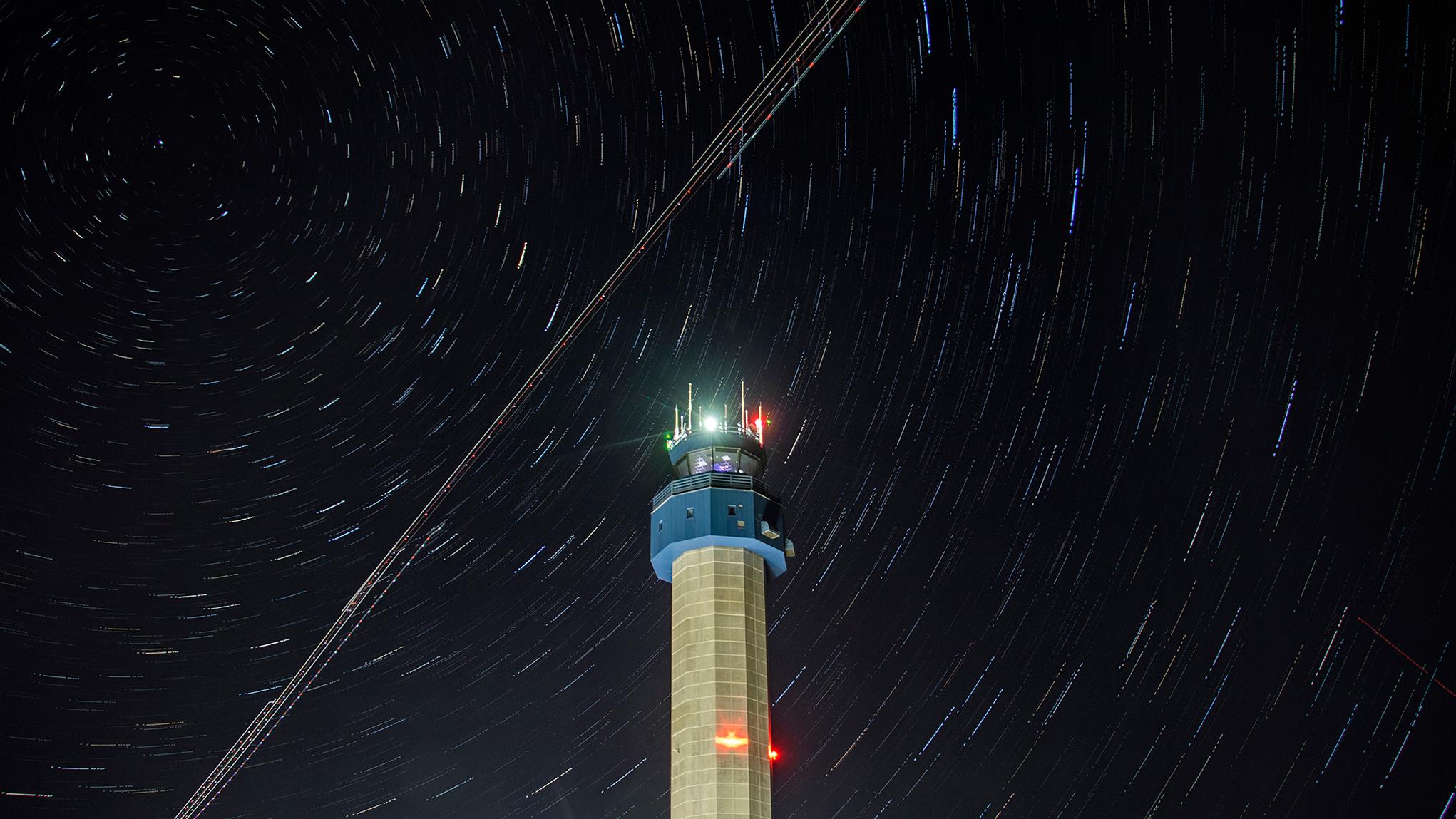By Sarah Scoles, Special to Denverite
If you're driving east on Highway 36 through Watkins, Colorado, go past the gas station that stocks a range of winter coats, take a couple doglegs and continue by the weathered white barn with a big BEEF advertisement on its side, and keep going beyond the parcels of prairie for sale. Then, finally, you'll come to a sign that still says "Front Range Airport."
It's a small facility, a 14-mile drive southeast of Denver International Airport, and no fences stop you from walking right onto the runway. Welcome to Colorado's spaceport.
"There's kind of almost a frontier feel to general aviation," says facility director Dave Ruppel. That frontier ambiance is especially acute here, on what was once an actual frontier. And the airport's Wild-West sense has only increased since last August, when it became the Colorado Air and Space Port. Although no one has yet changed the sign, or gone to space, it is from here that the state hopes to launch rocket-planes, sending people and objects beyond Earth's atmosphere.
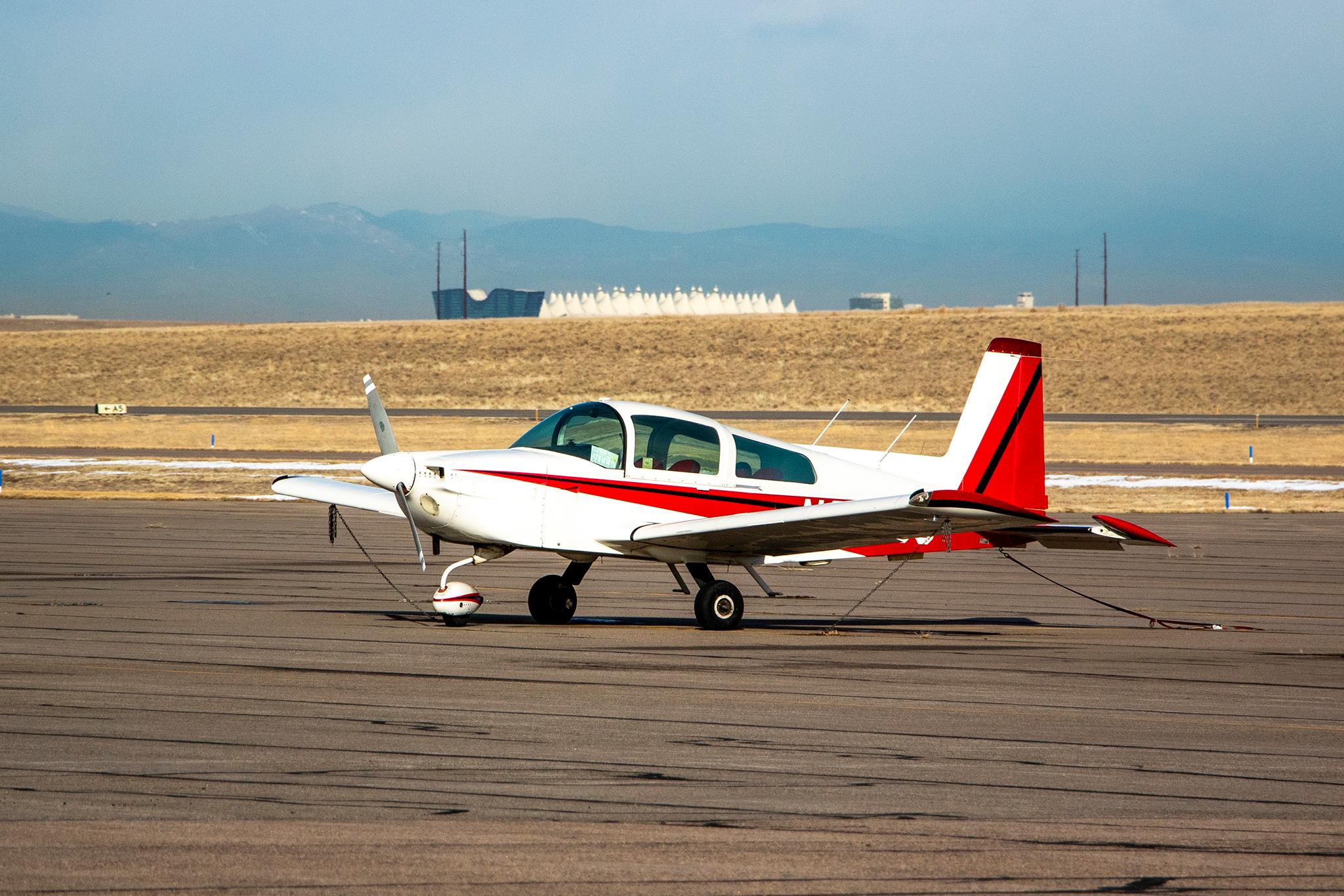
Colorado is a semi-sensible place to put a spaceport: It has the second-largest aerospace economy in the U.S., and the largest per capita. In the private sector, 26,620 Coloradans worked directly in the aerospace sector, as did 28,810 military personnel. Many work for the big guns, like Boeing, Lockheed Martin, Sierra Nevada, and Northrop Grumman, but most of the state's 500-ish aerospace employers are small companies.
When these companies make big news, it's often because of their feel-good projects: making test capsules for astronauts, sending cute robots to Mars, launching weather satellites, making space shuttles that looks like orcas, designing systems for NASA's pretty-picture telescopes. But away from the bright lights -- and making up the majority of the $15.4 billion impact the space industry has on the state -- lurk projects a little harder to talk about: defense initiatives, intelligence satellites, national security space missions. These stay deeper in the shadows, sometimes because they're classified, but also partly because they're less rah-rah press-releasable.
People don't talk much about how important space is to the military, or how important the military is to the space industry. But here and elsewhere, space is a giant part of the Defense-Department-Industrial complex.
"Eighty percent of the industry in Colorado is associated with the Department of Defense," estimates Ruppel, sitting in his office above the runway. He imagines the spaceport, too, will someday do military work, maybe launching small satellites.
But that future -- as well as the more civil sci-fi one -- is years out. And hard to picture.
A plane takes off behind Ruppel's head. It speeds down the runway and noses up against the horizon-spanning background of the Rocky Mountains.
That looks pretty normal. Planes should take off from plains and ascend over mountain ranges. But the idea that they should ascend all the way to space? "It's challenging in a community like this because people don't think about launches from Colorado," Ruppel says. And the small steps toward that goal go back years: Back in 2011, then-Gov. John Hickenlooper announced that the state had begun the application process with the FAA's Office of Commercial Space Transportation, which propels would-be spaceports into the future. If all went well, that transformation could happen by the end of 2012, Hickenlooper said. The state's congressional delegation soon supplied the FAA with a unanimous support letter.
But it took around seven years longer than the governor estimated. Resistance came largely from the eastern side of the port, the less populous area over which these rocket-jets would fly. "Are you going to be dropping things on my head?" Ruppel says residents asked. "Scaring my animals?" He's given about 100 community presentations to convince people the aero-future will not rattle their windows or give their cows coronaries.
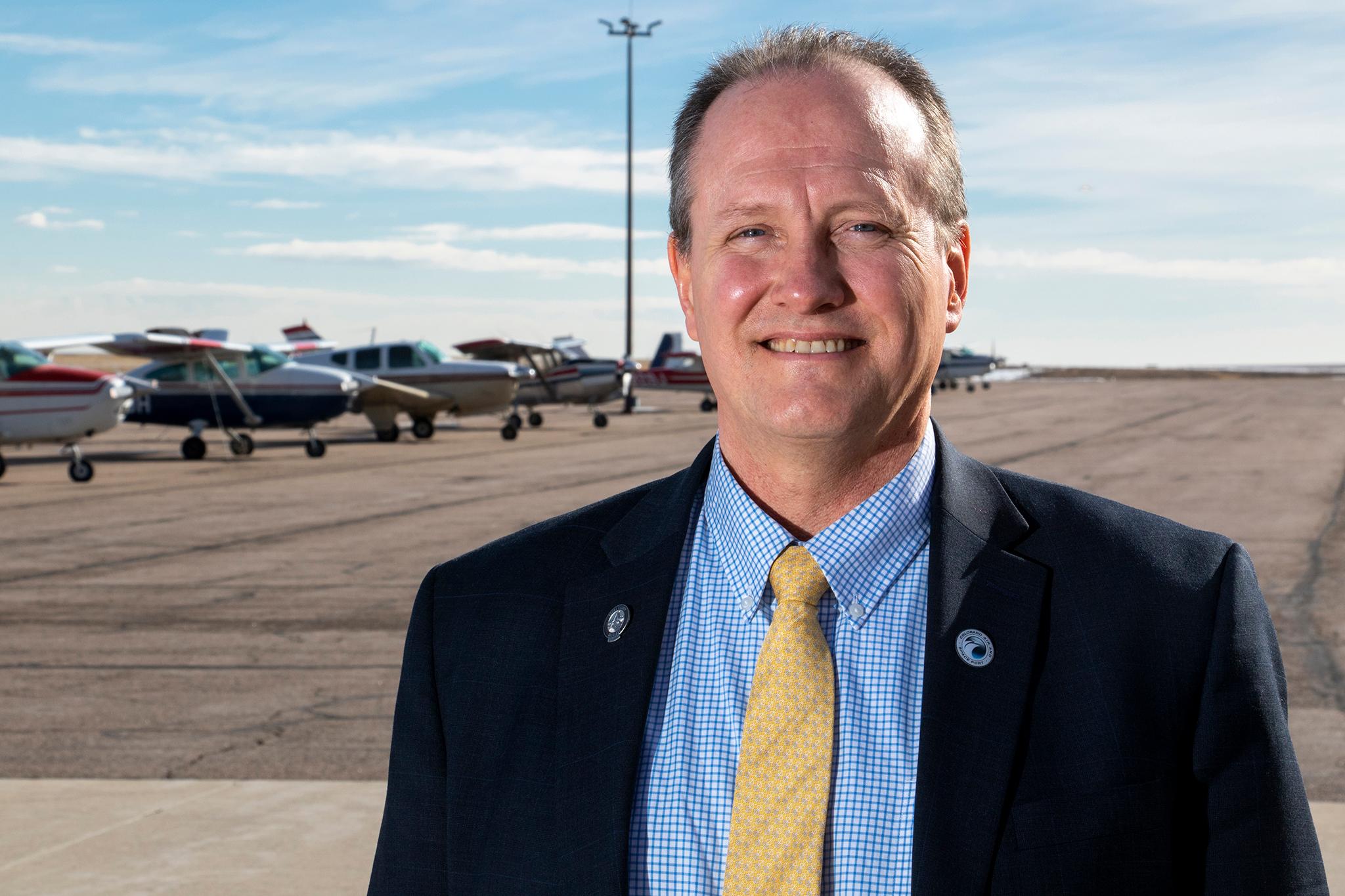

It took a while to convince the FAA to think of it that way, too. Initially, Ruppel's team wanted to launch vehicles that fire their rocket engines right on the runway, taking off like planes -- but faster. But what would that kind of heat do to the pavement? And what of air traffic at DIA?
Finally, at a D.C. meeting with the FAA's space people, its airport people, air traffic control people, and flight safety people, Ruppel simplified the situation: "What would be easiest for you to say yes to?" he asked the gathered officials.
An easy yes, they said, would be spaceplanes that take off with regular jet engines, fire up the rockets at high elevation, briefly slide into space, and glide to a landing.
Someday, those spaceplanes will lift tourists beyond the atmosphere, just to see what it's like, and touch back down in Watkins. Wells Fargo executives may book seats on quick flights from here to company offices in Tokyo, via, you know, space. Researchers from CU Boulder's Laboratory for Atmospheric and Space Physics might do suborbital experiments, like studying how ultraviolet light heats the atmosphere. The military might [redacted].
For now, though, no one will be doing any of that. The kinds of spaceplanes allowed to launch here don't exist yet. And they won't, says Ruppel, for at least five to eight years.
So in the meantime, the Colorado Air and Space Port is trying to build a "self-sustaining aerospace ecosystem." Ruppel points to a presentation board near his filing cabinet, which shows what he hopes the spaceport will someday look like: big white domes connected by big white tunnels, like a biohazard setup that's meant to launch rather than lock down.
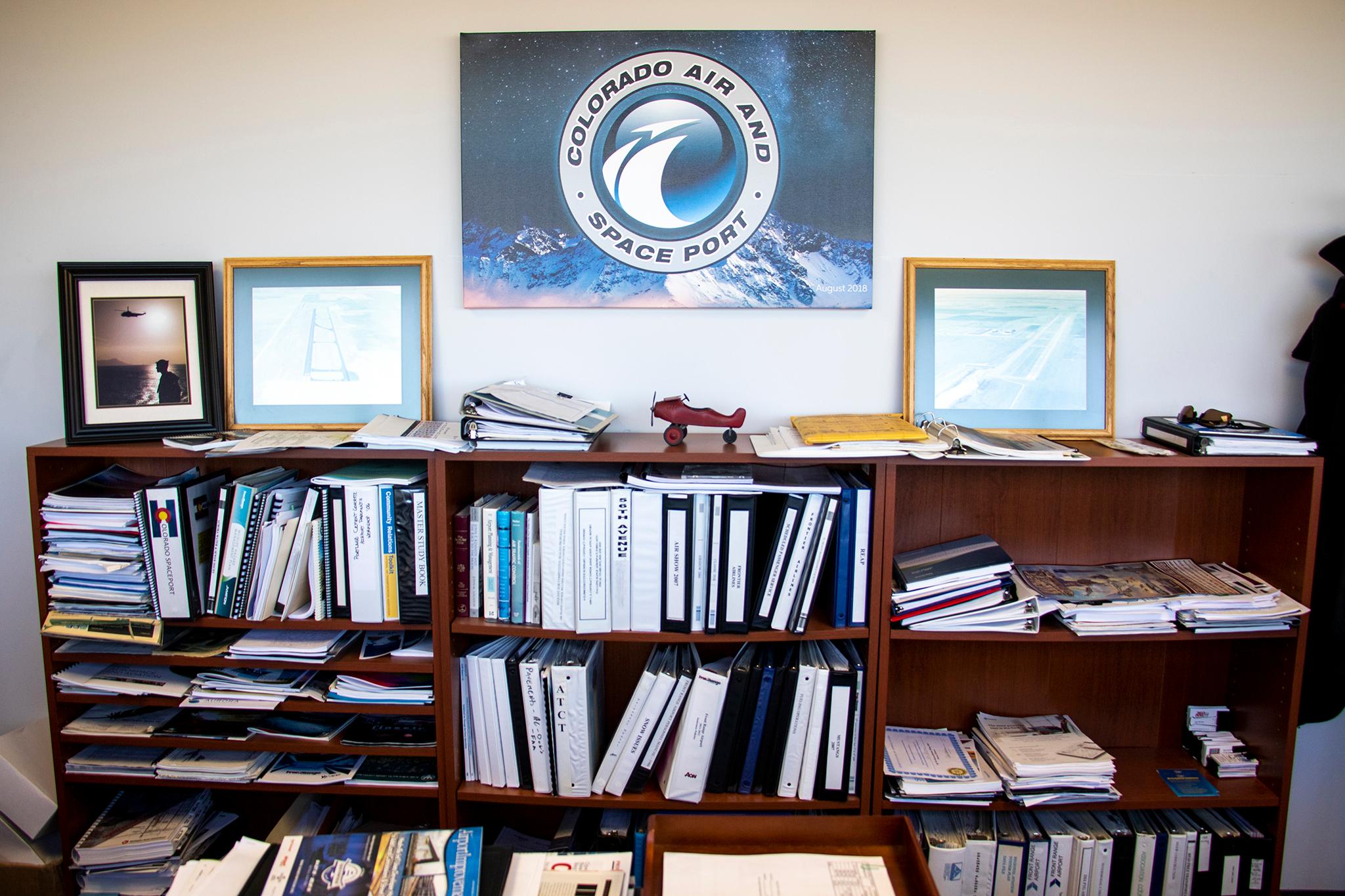
Right now, the anchor tenant in that ecosystem is a company called Reaction Engines, which is making a rocket engine that could, theoretically, thrust a space vehicle up to Mach 25.
Reaction Engines is one of the space companies that excites Alires Almon. She's the CEO of Deep Space Predictive, a human-centric company looking into astronaut psychology and behavior, and the chair of the Colorado Space Business Roundtable. For the past 15 years, that Roundtable has held its annual Round-Up at the Denver Museum of Nature and Science.
On a Sunday in March, she wanders the open plan of the museum's Space Odyssey exhibit, noting how much that meeting has grown. Above her hangs a rocket model that looks like three giant insulin pens stuck together.
"I think that's a Delta IV," she says, tiling her head. "Delta IV Heavy."
It's built and fired off by a Colorado company and Roundtable member, United Launch Alliance (ULA). But while Almon appreciates heavy government contractors like ULA, she's also keen on the lighter ones that make up most of the membership. Like Red Canyon, an engineering and software company that operates out of a big stone house in Capitol Hill and has helped NASA collect climate data from orbit. Or Roccor, whose Longmont engineers are helping guide satellites to a gentle, timely death, so they don't become space junk.
Almon's sights are set beyond orbit, though. Which makes sense, given her origins: She first blasted into the space industry with a (DARPA-sponsored) program called 100-Year Starship, an ad hoc think-tank about how humans could go star trekking in a century.
She wanders to Space Odyssey's centerpiece, a recreation of Mars (sponsored by Lockheed Martin). Peering through a wall-sized window, she sees rusty sand, a lonely and still rover, Grand Junction-ish rocks layered up in the foreground. It's a replica of Mars's Candor Chasma, a 503-mile-long canyon, a cliffy, duney, landslid place.
Almon walks backstage, where the "astronauts" who perform for museumgoers get ready. Hanging in sizes S, M, and L are (Earth)-sky-blue-and-red astronaut outfits that look like wetsuits. A set of PVC pipes pokes from the wall, each proffering an astronaut glove. Together, they resemble an alien made only of hands, always reaching. Almon ignores them and pokes her head into the fake Candor Chasma. Which is a place she would go for real.
"I would go anywhere," she says.
Mars may be her ultimate goal, but right now, the U.S. is focused on on our nearest neighbor, and so too are Colorado's companies. "The whole Moon thing is really going to happen," she says.

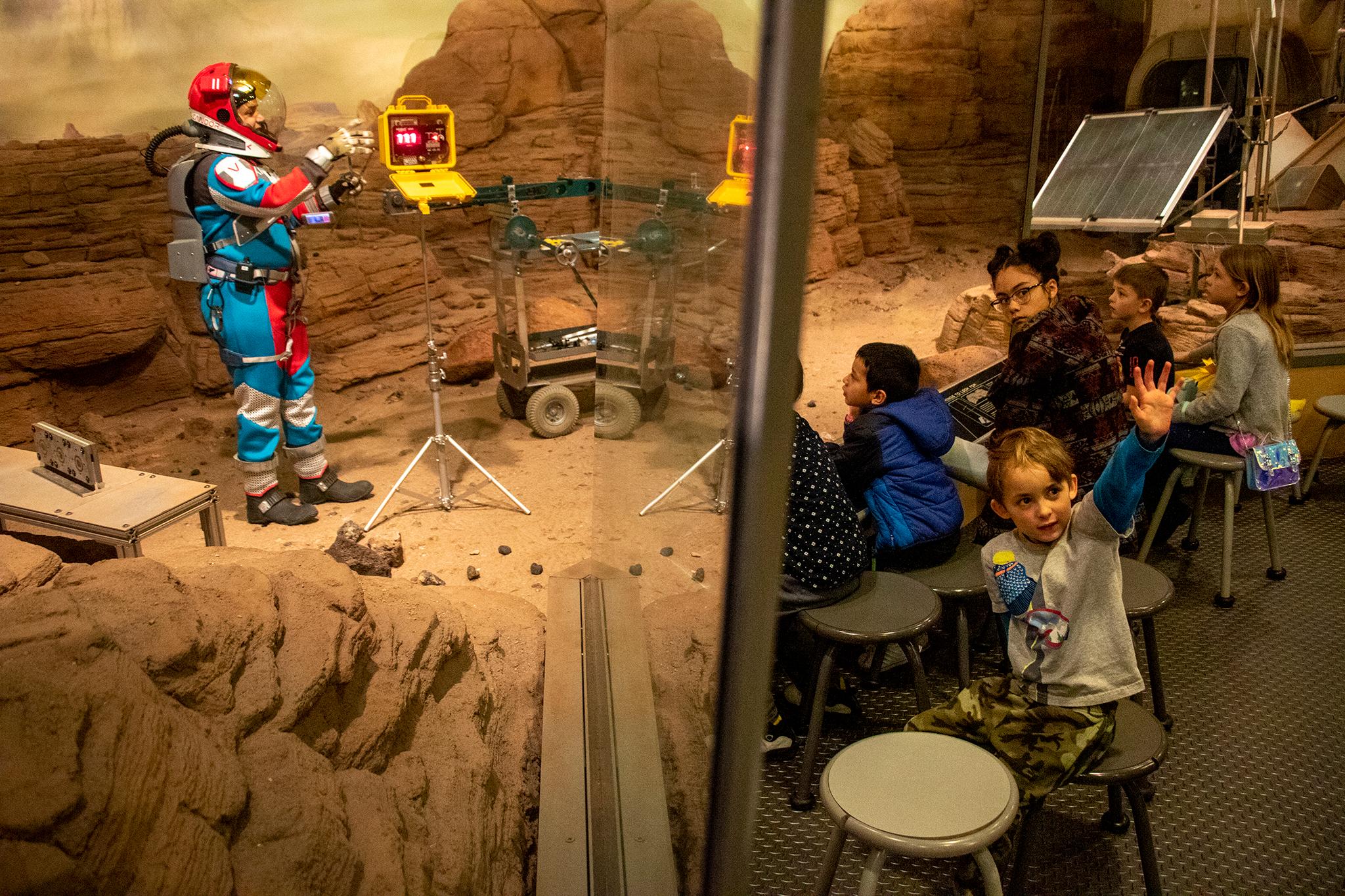
Lockheed Martin and ULA are already working on lunar base plans. And if past is future, Colorado will probably supply some of the people to populate those space colonies. "CU Boulder has produced 14 astronauts," says Almon.
One of them, Scott Carpenter, brought a lunar rock back with him, now enshrined in layers of protection on the museum floor. It's only a tiny chip, like the broken tip of a spear.
At the exhibit, Almon leans down and squints. "Physically, it's just a rock," she says. But here it is, behind thick glass and a combination lock. That's the measure of the endeavor: how much we revere the things, and the people, who come back.
Turning around, Almon gestures toward children at a space shuttle exhibit, trying vainly to dock miniature vehicles to a miniature space station. "These little kids right there might have space tourism as a regular part of their adult lives," she says, wistfully.
And then, someday, some other Colorado kids will help humans go way farther. To Candor Chasma. To another star system. Who knows. "Colorado is going to be fundamental to whatever happens in space," she says.
She's bluelit by a giant sphere onto which images of Earth - some collected by Lockheed's GOES satellite - project themselves.
"That big blue dot," she says, facing this fake world as it turns and turns. "It's just gonna be light in the darkness."
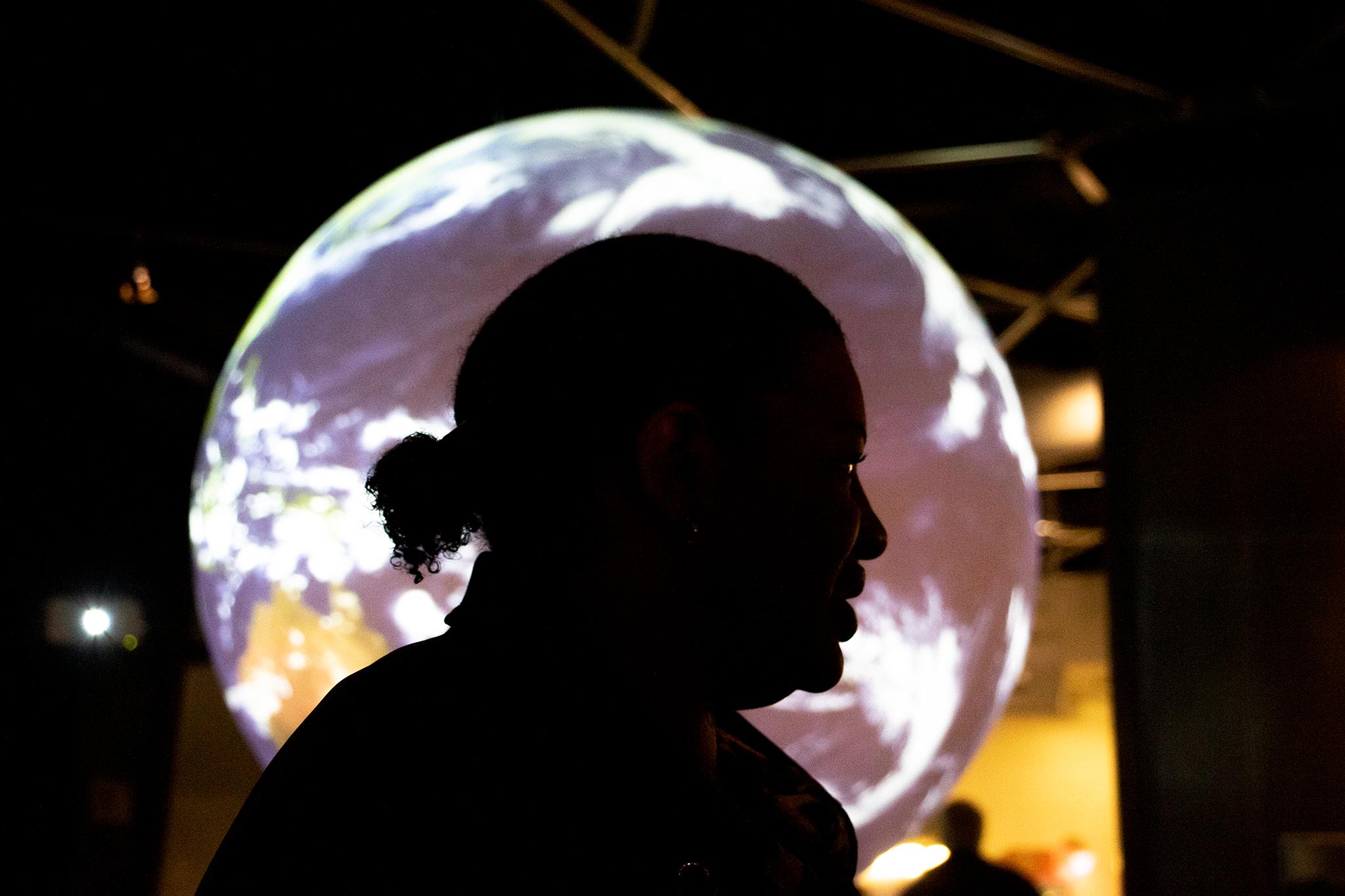
That journey, and the role the state may play in it, is years out. But the origins of Colorado's role in space exploration go way back.
"It really started post-World War II, in the space race," says Jay Lindell, Aerospace and Defense Industry Champion (real title) at the Colorado Office of Economic Development. The tops of the mountains look level with him out the high-rise window, a block off the 16th Street Mall.
When American humans talk about the Space Race, we mostly talk about the triumph of human will and innovation, our desire to explore and better the species -- while also beating the Soviets. But whatever glaze we put over it, underneath it was a battle for political primacy and a demonstration of firepower. After all, what is a rocket but a souped-up missile-delivery system?
So it's no surprise that missiles were Colorado's first big space contribution. Back in the mid-20th century, foreign missiles had a hard time getting this far inland, which made the state a safe place to homegrow weapons. So in the mid-1950s, The Martin Company -- now Lockheed Martin -- began to build and test Titan ICBMs, in Waterton Canyon, near where you now hike. Not long after, in Colorado Springs, the military established the North American Air Defense Command and the Cheyenne Mountain Complex -- an underground pseudocity that, sheathed in protective granite, could both detect and command missile launch even if the real city outside was already bathed in radiation.
Also in this era, Ball -- the canning company -- spun off an aerospace division in Broomfield. CU Boulder became a hub of space tech and science. And since then, says Lindell, the sector has grown steadily, with dips and peaks pinned to the federal budget.
Today, in the commercial sector, Lindell likes the network of small satellite companies that build tiny orbiters cheaply. Over at Lockheed, engineers are developing a NASA capsule called Orion that will someday take astronauts to the Moon and/or Mars. Also at Lockheed, he continues, engineers are building the new set of GPS satellites.
You, of course, use these to hike in ICBM Canyon. But the signals they send out also keep the power grid, banking systems, and communications networks in order. And they mostly exist for the Air Force, whose Space Command, spread across Colorado bases, operates them.
Air Force Space Command is where we learn the term "counterspace operations."
Air Force Space Command headquarters sits inside Peterson Air Force Base's West gate. In the lobby, scale models of private rockets -- three, like the one in the museum, made by ULA -- thrust toward the ceiling, where a replica of a satellite hangs, its solar panels spread. The organization launches and operates satellites; delivers weather, communications, navigation, and intelligence from space; keeps watch over what's going on in orbit; and does something called "counterspace" operations.
Here's a fuzzy explanation, courtesy of Colonel Darnell Salley: "Space is a warfighting domain." Other countries are working on ways to derail our space assets. When pressed, he doesn't go into detail but posits a very vague hypothetical scenario: "Someone tinkers with [a] satellite."
He continues with an equally vague solution to said scenario. "We've gotta make sure we've got the ability to prevent that from happening," he says. "And if it does, we've got the ability to take action to neutralize that threat and prevent it from happening again." Which sounds as ominous as it does opaque.
A new Defense Intelligence Agency report gives a few more details than Salley about what Salley might mean. Released in mid-February, Challenges to Security in Space lays out how China and Russia can jam signals going to or coming from space. They have or are working on "anti-satellite" missiles. Both are building satellites that can slink up to other satellites and disable them. Also, apparently, they have lasers that can beam-maim them. Also also, Iran and North Korea are problems.
Presumably, the U.S. has or is working on many of the same weapons it worries others will use, and this is part of what "prevent" and "neutralize" mean. Regardless, the potential for space conflict, offense and defense, has prompted President Trump to push a so-called "Space Force," a new branch of the military to take care of many in-orbit things the Air Force handles today. Many suspect it will find its home in Colorado, an option that Rep. Doug Lamborn and Sen. Cory Gardner have propelled forward.
A Space Force sounds, at first, like a plot device in a Star Wars spoof. After all, the idea that space should be a peaceful place has burned itself into the way we, the people, think and talk about the great beyond. It's even codified, in a 1967 agreement called the Outer Space Treaty: Countries signed this treaty during the frigidity of the Cold War, in the middle of the Apollo Moon missions, when space was perhaps the least chill it's ever been.
The treaty says that no country can rule over a space body. No one can put weapons of mass-type destruction up there. Activities should keep the peace and promote cooperation. Countries should help out other countries' astronauts. Mostly, "the exploration and use of outer space ... shall be carried out for the benefit and in the interests of all countries, irrespective of their degree of economic or scientific development, and shall be the province of all mankind," the document declares.
That's not really the universe we inhabit anymore. "The space environment that we've been accustomed to for the past 50 years is changing," says Robert Riegel, vice commander of the 460th Space Wing. From Buckley Air Force Base in Aurora, Riegel's wing uses heat-sensing satellites to detect flying missiles.
Neither he nor Salley is really answering questions about the Space Force. Probably, in part, because there aren't a lot of answers. On Feb. 19, Trump signed a policy directive that places this unit under the Air Force's umbrella, and reaffirms a future "United States Space Command" to oversee military space ops (on March 7, 10 Colorado lawmakers sent a letter to the Acting Secretary of Defense, urging him to put it here). The Defense Department put forward a proposal to Congress, which will likely counter it, with more details.
When Almon first heard about the Space Force, it made her uncomfortable. Why did we need more fighty presence in space? But she's come around. "The dangers that are out there are real," she says. And it's likely, she says, that that defense will continue to happen in Colorado, as it has for years.
In the meantime, work at Air Force Space Command continues as it always has -- which, Salley notes, included awarding $1.4 billion to Colorado aerospace companies in 2018. That's good for the state: Money in the bank, jobs on base and in the private sector. And in fact, when you take into account the Space Command work at other bases -- Schriever and Cheyenne Mountain in the Springs, and Buckley in Aurora -- the unit has an "economic impact" of around $3.5 billion on Colorado, according to a handy fact sheet from the Air Force.
Put another way, the denizens of the "warfighting domain" make more money than people who have peaceful business in orbit.
And that disparity is a sticking point for a Colorado Springs group called Citizens for Peace in Space.
You can often find the group at the annual Space Symposium-holding protest signs. During this conference, thousands of space-industry workers descend on Colorado Springs' Broadmoor resort. Set at the base of Cheyenne Mountain, the complex is opulent: marble floors, furniture with finials, three-tiered fountains. You know, hedges. And on a street corner, a guy named Loring Wirbel passes out information-bearing paper and, sometimes, hats that say "PEACE" on them.
Wirbel and the Citizens oppose using (and seeing) the cosmos as a conflict zone. But they're also against the fact that the industry and the conference publicly emphasize the peaceful things they are doing, and don't talk enough about second uses of dual-use technology. Whereas in real, honest life, many of the conference's 2019 sessions are classified.
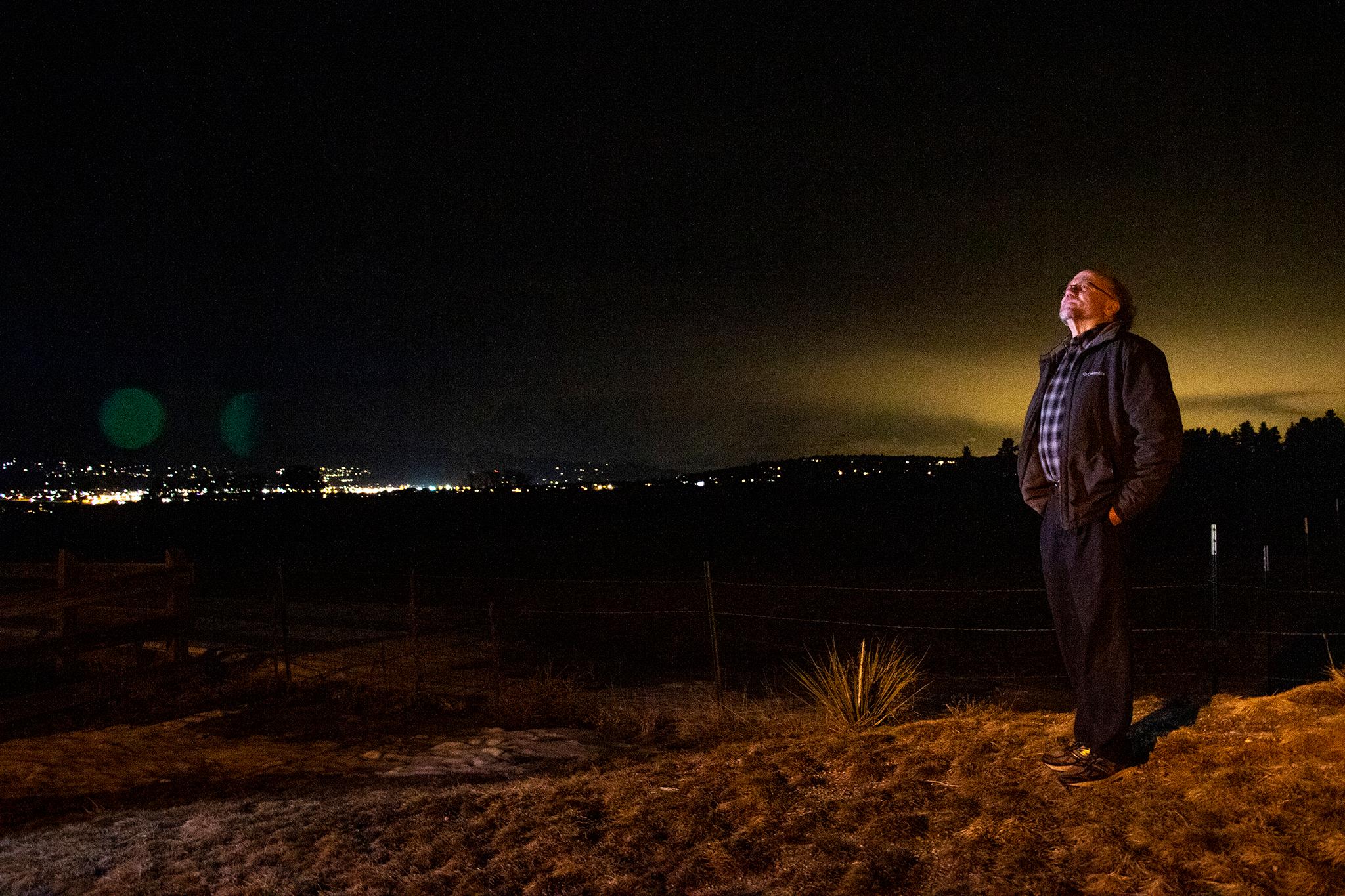
Lots of aerospace engineers, including surely some in those classified sessions, got into space because they loved the civilian stuff: Elon Musk's grand visions, NASA's journey to Mars, satellites that beam internet service to remote villages, space telescopes that see back almost to the Big Bang.
But the truth even for the most earnest aerospace worker is, their rockets may launch spy satellites, and their technology may be designed to deliver missiles they hope never to launch. Sometimes, that's fine, even great, with them. They believe in the military mission they're working on. And the "warfighting domain" deal isn't just some made-up emergency. Still, sometimes, the military influence is an unpleasant early-career surprise for rocket scientists. But what are they going to do, you know? Sure, maybe they wanted to settle Mars, or send astronauts around the Moon, or mine asteroids. But if missile defense is the job they get when they graduate, are they going to say no? If they work for a company whose rockets launch satellites for the National Reconnaissance Office or the Air Force (read: pretty much every rocket company), are they going to quit? Would you?
On top of that, people in the industry, have "an amazing way of rationalizing the work," says Wirbel. After all, in classified projects, people are often only touching a small part of a larger whole -- and may not even fully know what that whole is. And because they're not masterminding the entire enterprise, they can say, "If I weren't building this circuit board, someone else would."
For what it's worth, this is true of many industries. Whether you're branching into the privacy-invading backends of social media, or the brand-name medicines that will bankrupt customers, there's a shady side of every tree. Plus, in science and technology, nearly half of federal research and development money comes from the Department of Defense, and even if your peaceful principles don't align with that, if you want to do your R&D, it's hard to say no.
Gary Jackson, a semiconductor test engineer who worked for many years at an aerospace contractor in Colorado Springs, knows all of these feelings, and the futility that comes with them. "When you're an engineer in the United States, it's difficult to not be involved with some type of defense work," he says. About half his job, later in his career, was directly tied to the military, making communications equipment that often found itself aboard national security space missions.
For a long time, he felt okay about it. At the office, he says, "90 percent of the people don't even think twice about being involved with the military." They also don't talk twice about it. It's the water in which they swim, the spacetime in which they float.
Jackson's conversion, though, started when he and his wife visited an outpost owned by a guy named Peter Sprunger-Froese, during a homelessness advocacy event. Sprunger-Froese builds bicycles and gives them away to members of the homeless population. "There were about 15 of us, and [Sprunger-Froese] took a bunch of chairs in his clinic, and he set them up, and we just listened to him," says Jackson -- listened to him talk, for instance, about earning little enough to avoid taxes, and so not pay for the military.
"That was quite a shock to my system, to meet somebody like that," says Jackson.
And understandably: It's an extreme set of positions, even for a peacenik. Still, Jackson let the ideas seep into his mind. He kept talking to Sprunger-Froese, who hooked him up with Citizens for Peace in Space. He kept his job, which was secret anyway, quiet. "In the back of my mind," says Jackson, "I'm thinking, 'Sheesh, maybe if these people knew what I was doing, what would they think?'"
What he was thinking, at the time, was that he had a house. He had a family. He needed the money. He didn't know what to do, so he didn't do anything.
But after a few years, economics resolved Jackson's cognitive dissonance for him: The company laid him off, as well as many others. "If you believe in God," he says, "then God caused -- allowed -- me to lose my job for a reason."
It was then that he resolved never again to do defense work. And while he searched for such a pacifist job in the States, he failed to find one, and has moved to Europe.
Jackson's ideas can seem quaint in the age of a Space Force, killer lasers, and stalker satellites. Today, space is, as it was during the Cold War (and perhaps has always been), not a place to forget borders but a place to demonstrate whose are better, and whose will hold.
When Trump signed the Space Force directive, he laid out this sentiment pretty clearly. "Our destiny, beyond the Earth, is not only a matter of national identity, but a matter of national security," he said. "So important for our military."
"So important," he said again, as he is wont to do. "And people don't talk about it."

Sarah Scoles is a freelance science journalist who lives in Denver. She is a contributing editor at Popular Science, a contributing writer at WIRED, and the author of the book Making Contact: Jill Tarter and the Search for Extraterrestrial Intelligence.

